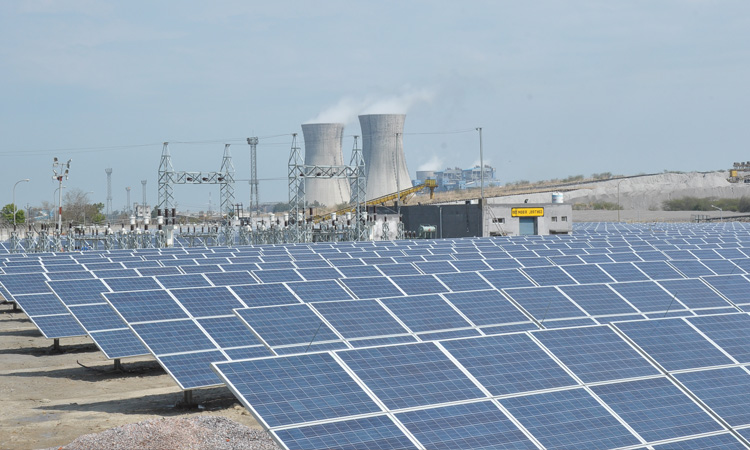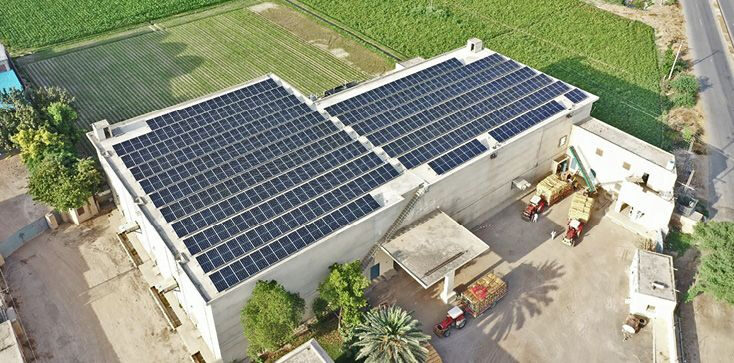From pv magazine India
India's Ministry of Power and New and Renewable Energy have issued revised guidelines for thermal generation companies to set up renewable energy generation capacity, either by themselves or through developers, via open bids. The companies will supply the bundled power to the consumers under existing power purchase agreements.
This will enable the replacement of high-cost fossil fuel based energy with cheaper renewable energy under existing PPAs. The gains from the bundling of renewable energy with thermal will be shared between the generator and distribution companies or other procurers on a 50:50 basis. As the renewable energy will be balanced with thermal energy, the distribution companies will need not acquire any separate capacity for balancing of renewable energy.
“This is a very significant step toward achieving the goal of 500 GW of non-fossil fuel capacity by 2030. The distribution companies will be able to count the renewable energy supplied under the scheme towards their renewable purchase obligation and this will be without the financial burden of separate PPA. This step by the central government will lead to a faster energy transition and will be beneficial for both the generators and the distribution companies,” said the power ministry.
This content is protected by copyright and may not be reused. If you want to cooperate with us and would like to reuse some of our content, please contact: editors@pv-magazine.com.




Western commentators have been far too quick to dismiss Modi’s Glasgow pledges as cynical grandstanding. They are that, of course; Modi is an unscrupulous Hindu nationalist – but at the same time an intelligent and far-sighted politician who hires capable technocrats. This step on PPAs offers a way forward to the embattled Indian coal generators, facing unmatchable price competition from renewables. You do have to wonder though if it will be enough. The pure renewable suppliers will soon be able to beat coal for a firmed supply using batteries or pumped hydro storage. (Note for aficionados: this does not mean synthesizing a 24/7 supply, which does not match the daily load curve. The real demand at 3 am is pretty small anywhere, the problem is the evening.) In addition, few coal plants anywhere are flexible enough for operation as intermittent backup to dominant renewables. The woes of the Indian coal sector are just beginning.
Hydro power, the cleanest and the cheapest form of renewable energy, available on 24×7 basis without any land requirements.
Water is more than 800 Times Denser than air and has the potential to extract 61 to 63 % more energy than wind even at low speed. Let us not forget that every cusec of Flowing Water is potential hydrokinetic energy and nature has blessed us abundantly with this free gift. “Revolutionary” is the word NMSU electrical engineering professor describes the hydro kinetic energy. He further goes on to add (Hydro power energy extractors have the potential to transform the renewable energy sector in the very near future).
Every Cusec Of Flowing Water Is Potential Kinetic Energy
As Compared to Solar, The Energy Generated is Five Times more on Daily Basis and Thus One Fifth of the Cost. Needless to Mention that this Vast Source of Cleanest and Cheapest form of Energy can Offset any Further Addition Of Big Dams in the Fragile hilly Regions and Which causes Grave Dangers for the Environment as also to the Natural Eco system. To Top it all, This will Provide Huge Employment to a large rural population directly and indirectly. The Energy Thus Produced Shall be a Bonus for the Upcoming Electric Vehicle Industry as also to the farmers.
Small Hydro Is Not Small,Don’t get Distracted
Let Us Join Hands for Achieving this Goal
Hydro power, the cleanest and the cheapest form of renewable energy, available on 24×7 basis without any land requirements.